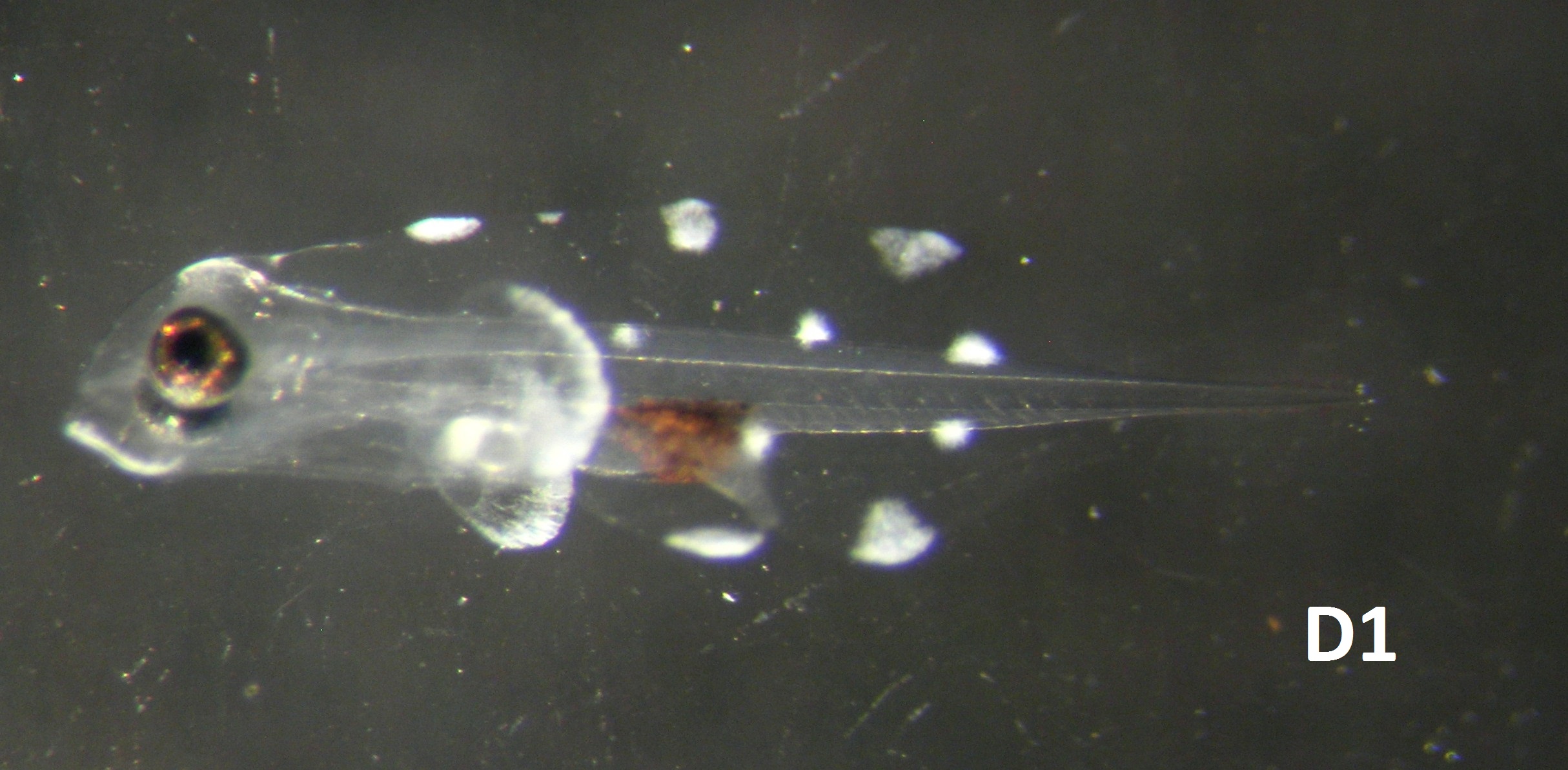Luvaridae: L II A4B
Luvarus imperialis Rafinesque, 1810
Louvar







|
Egg diameter in µm |
Number of oil globules |
Diameter of oil globule in µm |
Yolk texture |
Perivitelline space |
Position of oil globule at hatch |
Gut length at eye- pigment stage |
Myomeres |
|
1300 |
1 |
265 |
clear |
narrow |
stern |
55% of NL |
23 |
Egg: No photograph of this egg is currently available. The well-developed embryo has green/yellow pigment in the finfolds and on the yolk. There is white pigment on both edges of the notochord near its tip. Incubation is probably 48 hours, since one of the eggs hatched on the evening of collection.
Larva: The white pattern of the NH larva (B), quickly organises into 4 dorsal finfold edge blotches, two pairs dorsal and ventral on the notochord, 2 blotches on the ventral finfold edge, and scattered spots in the caudal finfold (C). A close look at Plates C and D, will show a fine dusting of white over the whole larva and finfolds. The only prominent black pigment, is a blotch over the anus, which is enlarged by day 2 (D). Note the enlarged pectorals, which are white edged, the white line on the mandible, and the white spots on the tip of the notochord (reduced in D1). By day 3, black pigment forms three patches; clustered around what remains of the yolk, through the notochord at the anus, and mid-tail, plus a fourth smaller spot ventrally near the notochord tip (E). B: NH, C: 1 day, D: 2 days, E: 3 days, of dying larva, becoming opaque (25°C). The last image is of a 4.4mm larva collected in my plankton net off Park Rynie in December 1991.
This egg has only been seen on four occasions, two each were in consecutive samplings, a week apart in December 2000 and a day apart in December 2009. All but 1 were in offshore samples. On the first occasion, accompanying myctophid larvae, and unusual squid eggs, suggested an intrusion of upwelled offshore water. The larva bears similarities to serranids, acanthurids and Zanclus. Four larvae hatched from 7 eggs collected in offshore sample of 9 December 2009 have been barcoded, and match the barcode of an adult Luvarus in BOLD.